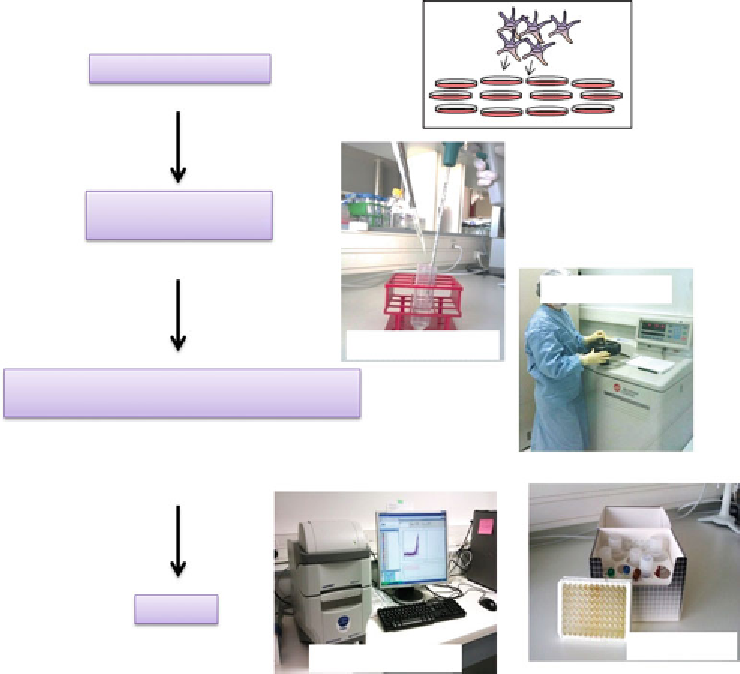Biology Reference
In-Depth Information
Seeding of 293T cells
Day 1
Transient transfection
by calcium phosphate
Day 2
Ultracentrifuge
CaPO
2
precipitate
Harvest and concentration of lentiviral
vectors by ultracentrifugation
Day 4
Titration
Day 5
p24 titration
Titration by qPCR
Fig. 6
Schematic diagram of the various steps in lentivirus production
293T cells (ATTC-CRL-11268) are used for LV production
because of their high transfection effi ciency [
106
,
107
]. These
human embryonic kidney cells are immortalized with adenoviral
E1A/E1B proteins and express the SV40 large T antigen, facilitat-
ing replication of the episomal plasmid. They grow in DMEM
medium supplemented with 10 % FBS (
see
Note 8
) and 1 % strep-
tavidin/streptomycin. They are maintained in a humidifi ed incuba-
tor at 37 °C, under an atmosphere containing 5 % CO
2
. These cells
are subcultured every 3-4 days, at a dilution of 1/5 (
see
Note 8).
For regular production, 5 × 10
6
cells should be plated in a 10 cm
Petri dish, whereas for large-scale production, 5.8 × 10
7
cells should
be plated in a stack, as described below (Table
1
;
see
Note 9
).
3.6.1 Day 1: Seeding
of 293T Cells
The day after plating, the cells should have reached 50-70 % con-
fl uence: smaller numbers of cells result in lower production yields.
The calcium-phosphate transfection method is used (transfection
effi ciency of up to 95 % in 293T cells). The CaPO
2
precipitate is
prepared as shown below (Table
2
) and all the reagents are
3.6.2 Day 2: Transient
Transfection in the
Presence of Calcium
Phosphate

Search WWH ::

Custom Search